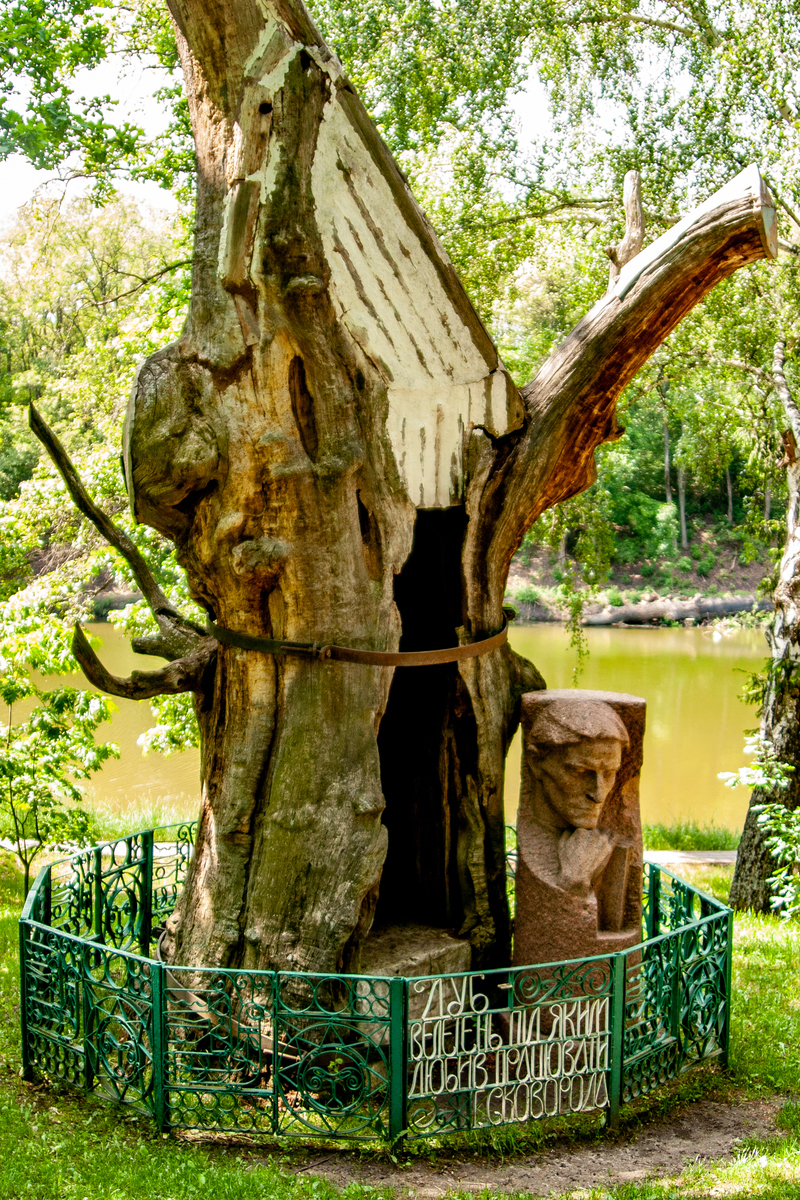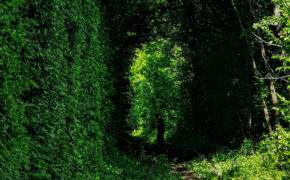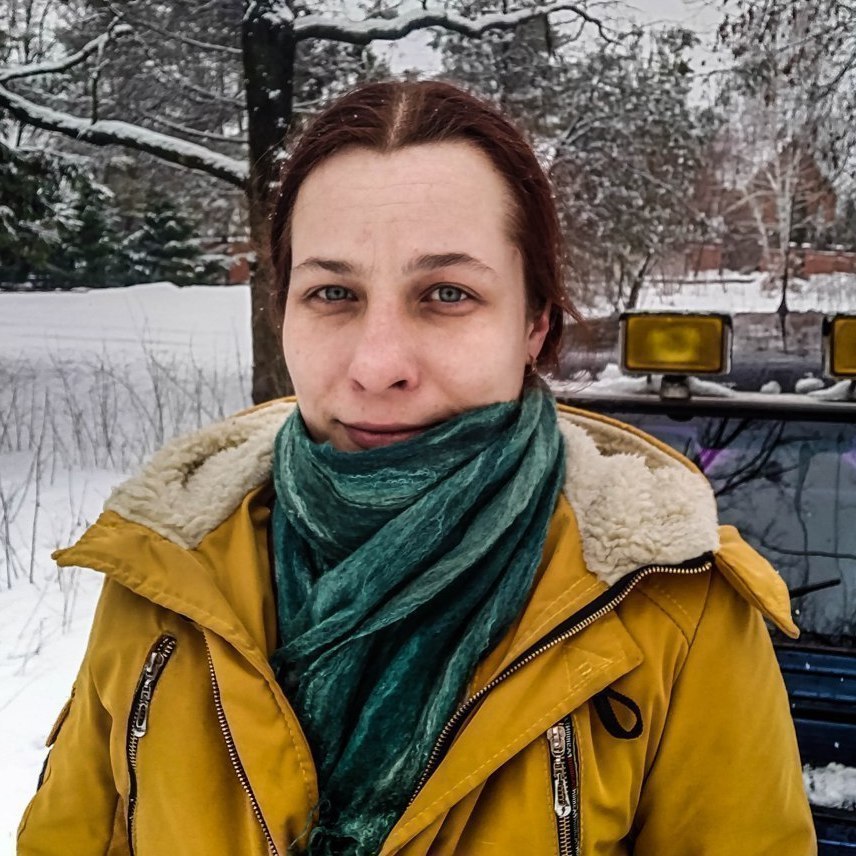Skovorodinovka – National literary-memorial complex of G. S. Skovoroda.
Type: Museum / Exhibition / Exposition
Country: Ukraine Region: Kharkiv region Locality: Сковородинівка
Availability: State, Available for visits, Bad road (during any weather, can be driven by two-wheel drive cars)
As it is written on one of the forums, “It is unlikely that this place will be interesting to those people who are not interested in the life of Ukrainian personalities. To such people an excursion to the Museum of the Skovoroda will not be a special pleasure. For all the rest there is a lot of interesting! Grigoriy Savovich’s philosophical publications, paintings, books of ancient philosophers and poets, and for real “fans” personal items of the Skovoroda, as well as a memorial room where one of the greatest Ukrainians lived and died! ”I fully agree with this statement. In order to admire the collection of personal belongings of a person, you have to be his fan. Well, or a historian.
The history of the Skovorodinovka fits in several lines1:
1732 – the date of foundation of the Ivanovka ranch.
1795 – after the church was built, the ranch became Pan-Ivanovka village. Here was the estate of the Kovalevsky family, in which the philosopher, teacher, writer and poet Gregory Skovoroda spent his last days.
1922 – in honor of the 200th anniversary of the birth of the great Ukrainian philosopher, writer and educator Gregory Skovoroda, the village was renamed Skovorodinovka.
1972 – to the 250th anniversary of the poet’s birth, which was celebrated all over the world under the auspices of UNESCO. The literary-memorial museum of G. Skovoroda was opened in the former manor-house.
On the road near the Maksimovka village, a blue arrow with the inscription “Skovorodinovka” indicates a turn to the left from the highway to a country road. It is notable for the fact that the ancient Muravsky Way passed here. From Maksimovka, this path led to Skovorodinovka, and then through Lyutovka, Odnorobovka and went further along the watersheds 2.
Today the National Literary-Memorial Complex of G. S. Skovoroda is a house-museum, a sample of the architecture of the XVIII century, and a park on the shore of the pond. The museum occupies several halls.
The personal belongings of Gregory Savvich, books, paintings, documents are stored here. There are a lot of mirrors in the rooms. According to the teachings of the philosopher Skovoroda, mirrors are the path to the knowledge of the inner world of man. Many tourists specially come to look at the unique violin, which was touched by the hands of the Skovoroda. By the way, the image of this violin is now shown on a 500-hryvnia banknote.
You will also be shown the room in which Grigory Skovoroda lived and worked.
The atmosphere of that time is recreated here: an old bureau with a lot of drawers, manuscripts, goose feathers …
The grave of the great Ukrainian is located near the museum. As the philosopher bequeathed, there is no cross at the burial site – only a stone with the inscription: “The world was trying to catch but did not caught.” According to legend, Skovoroda himself dug his own grave. The day before his death, he told everyone that he would die, dressed into white clothes, and the next morning passed to another world. But the mystique does not end there. In the XIX century, the rich landowner Kuzina acquired the estate of Kovalevsky. It is being told, that every night an old man in white clothes began to appear to her. Frightened, the landowner ordered to move the grave of the Skovoroda away, beyond the ravine.
A stone-paved path leads down from the museum to the pond. Moving along it a few meters, you will see a flower bed, from which seven linden alleys symbolically diverge in all directions. One of the alleys will lead you to the oak, under which Skovoroda liked to work. Museum staff say that a writing table and a chair could have been placed in the hollow. And two people could sit and talk in peace there. Now the tree is already dead, a bas-relief of the philosopher stands near it. Next to this 700-year-old oak tree is the oak-son tree, planted by Gregory Savich.
You can have a picnic or have a snack after a walk at the picturesque pond, which is popularly called Pan’s pants. It is formed by two streams flowing down the beams. The pond is located directly behind the park of the museum.
Turning along the shore of the pond to the right, you will see another monument – a well-shaped spring from which the famous writer took water.
You can come to Skovorodinovka at any time – the museum is open all year round. But the tour will be more interesting and memorable if you come to one of the folklore holidays that are held here every year3.
When we arrived, the museum was closed despite the quite tourist season (not to mention the year-round), sunny weather and other factors. The presence of Princess Catherine Alexandrovna Golitsyna had no effect on the caretaker’s desire to open a museum. And therefore, we went to watch the park.
As for me, the park itself is very good – you can nicely walk around it without a noisy crowd and enjoy the shadows and singing of birds and frogs. The only thing that, for me personally, it is eerie to look at the pieces of a tree, that died a long ago, in a steel hoop, proudly referred to as oak of Skovoroda. As in many other cases, such approach looks like thoughtless fetishism for me. Akin to exposing the skeleton of the most historical character for all to see. If there were no such trifles, the place would seem just beautiful.
But that’s my personal opinion))
Actually, the remains of oak.










